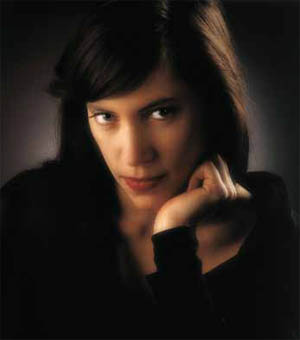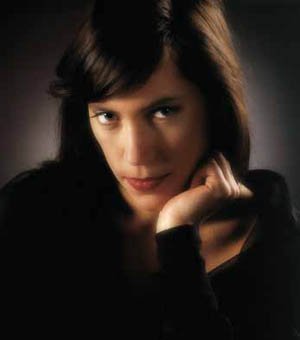articles/Lighting/goingdistance-page1
Going The Distance - part 1 of 1 2
by Dave Montizambert Published 01/10/2012

When speaking of light quality we often say, the light is soft or the light is hard. How soft or hard the light appears to us is governed by how bright the specular highlights are and by how pronounced the edges of shadows appear. Let's look at shadow edges for this article and leave specular concerns to another time. The definition of a shadow is an area that receives absolutely no light whatsoever from the main source of illumination, however, it may receive light from an extraneous, ambient source such as the open sky, a reflector, or a fill light.
If part of that light source 'sees around' into the shadow, that partially lit area is no longer considered to be shadow, it is a transition between fully lit and shadow. A gradual transition from lit area into shadow area is referred to as 'soft shadow edge transfer', an abrupt transition is referred to as a 'hard edge transfer'.
We have all been taught that a large source of illumination creates soft light and we have all been taught that the sun is the biggest light source in this quadrant of the universe. Well, how come direct sunlight on planet Earth creates such hard light? Soft light is not just affected by source size, the distance of that light source from the subject plays an important role too. For instance, the sun is a huge source of illumination, but on planet Earth it is seen as almost a point source. This diminishment of size by distance creates very hard edged shadows on sunlit objects on a clear day.
Let's see how this works in the studio with studio lighting. Look at the two images of Anna (Image 1 and Image 2). In Image 1, Anna is lit by a 31⁄2' x 31⁄2' white nylon scrim or panel, with a mono-block studio strobe light firing through it. This main-light source was placed to Anna's side some three feet away, see set-up diagram in Diagram 1. Notice how soft the shadow edge transfer is on the shadow created by her nose on her face. Now look to Image 2, the main-light was repositioned some six feet away from Anna, see lighting diagram in Diagram 2. At double the distance, the shadow edge will now 'tighten-up' to one quarter the area that it was at the first distance. A smaller transfer area creates a harder edged shadow.
See call-out box entitled 'DISTANCE OF LIGHT SOURCE' for more details.
To understand better how distance of the light source affects shadow edge transfer, let's imagine for a minute that Anna is a massive woman, a veritable mountain of flesh. So big that it would be possible to scale her face, as though it were the summit of Mount Everest, see Diagram 3. You carefully inch your way across her cheek's treacherously smooth complexion, fighting for foot and handholds. After a few near fatal slips you find yourself in the shadow caused by her nose. As you look up across her nose, you notice that the main-light soft-box is nowhere to be seen, you are in the 'true' shadow area (remember the definition of true shadow - an area of the subject that receives no illumination whatsoever from the main-light source). It stands to reason if you stand in the area that is in shadow, then the main-light will not be visible.

Looking back at the way you came, you notice a triangular patch of light around her eye. With the utmost caution you claw your way towards this main-lit area ending up under her eye. Looking up across her nose, you now see the main-light soft-box, in fact you can see the whole thing. You see it because you are in an area that is fully lit by the main-light source - the whole light source must be visible to this area for this area to be fully lit. If the camera exposure is set to correctly expose the light striking the subject from the main-light, then all areas that 'see' the whole light source will be correctly exposed.
If you were to inch your way over to the shadow caused by Anna's nose, stopping on that shadow's edge, you would notice that only part of the main-light soft-box is visible - less soft-box is visible as you move closer to the full shadow, more soft-box is visible as you move back towards the fully lit area. Obviously with only part of the soft-box seeing an area, that area would neither be fully lit nor would it be totally shaded - it is a transfer area and its technical name is Shadow Edge Transfer.
You are currently on page 1 Contact Dave Montizambert
1st Published 01/10/2012
last update 09/12/2022 14:54:47
More Lighting Articles
There are 0 days to get ready for The Society of Photographers Convention and Trade Show at The Novotel London West, Hammersmith ...
which starts on Wednesday 15th January 2025





